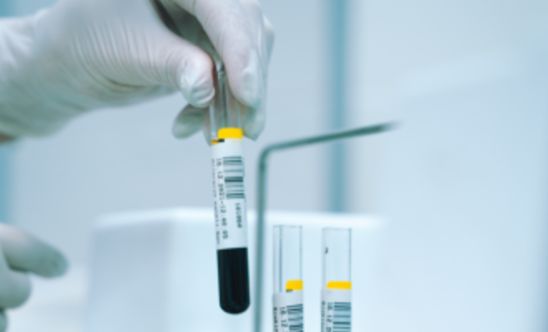Biomarker research
World Alzheimer's Day research blog: a new screening workflow for Alzheimer's disease
09/21/2023

The last decade has seen huge advances in biomarker science. As measurable indicators of processes occurring inside the body, fluid biomarkers have the potential to support disease diagnosis, risk prediction, and screening. Attention is now turning to implementation of fluid biomarkers in the clinic, so more patients can benefit from these innovative tools.
In our special World Alzheimer’s Month research blog, we present an implementation study that was published a few weeks ago in the Nature Aging journal. Here, researchers mapped out a cost-effective biomarker workflow to detect Alzheimer’s disease (AD) pathology in memory clinic patients. Read on to learn more!
Gold standard methods currently used to detect amyloid plaques in the brain can involve procedures such as PET scans and lumbar punctures, to image the brain and obtain cerebrospinal fluid for analysis. The downside? These procedures are costly, invasive, and dependent on access to specialised equipment. On the other hand, blood-based biomarker tests are quick, minimally-invasive, and could be performed routinely in doctor’s surgeries. However, blood biomarker tests are not quite as accurate as PET scans and cerebrospinal fluid analyses.
A new workflow for screening patients with memory problems
Faced with the challenge of balancing accuracy against cost – both physical and financial – a team of researchers led by Professor Oskar Hansson of Lund University have developed a new workflow to screen patients with cognitive impairment. In this workflow, patients are initially divided into risk groups based on a clinical evaluation and three different risk parameters: their age, whether they carry copies of the ApoE4 gene, and how much pTau-217 biomarker they have in their blood. Those who are assessed as “low risk” for AD pathology could be offered tests for other possible causes of cognitive impairment, or asked to return for repeat tests at a later date. Patients who are deemed to be at “high risk” for AD pathology can be given a clinical AD diagnosis, and offered treatments. Only patients who fall in an “intermediate”, uncertain category of risk undergo further testing using PET scans or lumbar punctures.
The Swedish BIOFINDER study
To develop and validate this workflow, Prof. Hansson and his collaborators turned to two independent memory clinic cohorts: BIOFINDER-1, and BIOFINDER-2. BIOFINDER was initiated over a decade ago, enrolling over 1,600 memory clinic patients with cognitive symptoms, as well as cognitively healthy peers. A particular strength of BIOFINDER is the fact that participants are often referred from primary care, representing a diverse, “real-world” population.
Together, the efforts of BIOFINDER investigators and participants have generated an incredibly rich dataset and sample bank, including brain imaging datasets, clinical assessment data, biomarker analyses, alongside cerebrospinal fluid and blood samples.
Minimising burden for patients – and costs for healthcare systems
Using BIOFINDER-1 to develop the workflow, and BIOFINDER-2 to validate it, the researchers were able to reduce the number of necessary lumbar punctures and cerebrospinal fluid tests by 60-80%, on average. The workflow achieved 97.5% sensitivity, yielding as low as 6.6% false negatives, and 97.5% specificity with only 2.3% false positives. These figures mean that researchers were able to maintain high levels of classification accuracy with the new workflow – and that patients were still likely to receive a correct diagnosis, only undergoing PET scans or lumbar punctures if stratified in the “intermediate risk” group. They also showed that the workflow performed robustly when using pTau-217 assays from two different manufacturers, underscoring the value of blood-based biomarkers in the clinical setting.
These are very encouraging results for AD researchers – and for EPND. This study highlights the value of data and samples from studies such as BIOFINDER, which includes the BF-PilotAD cohort that is listed in our Catalogue. As an initiative aiming to accelerate biomarker discovery, development and validation, it is exciting to see how biomarkers such as pTau-217 could be integrated into current clinical practice, minimising the burden for patients and caregivers, as well as the costs for healthcare providers.
Congratulations to the authors!
Read the Nature Aging article, here.